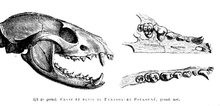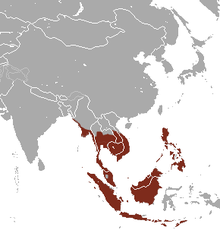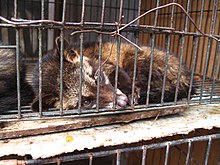суббота, 30 января 2016 г.
пятница, 29 января 2016 г.
Balinese caste system
The Balinese caste system is a system of social organization similar to the Indian caste system. However, India's caste system is far more complicated than Bali's, and there are only four Balinese castes.
The four castes of Bali are:
- Shudras – peasants making up more than 90% of Bali's population. They constitute close to 93% of the population.[1]
- Wesias (Vaishyas) – the caste of merchants and administrative officials
- Ksatrias (Kshatriyas) – the warrior caste, it also included some nobility and kings
- Brahmins – holy men and priests
Note the similarity of the castes to the four varnas (shudra, vaishya, kshatriya, brahmin) of India.
The members of the four castes use different dialects of the Balinese language to address members of a different caste. Middle Balinese is generally used to speak to people whose caste is unknown in an encounter. Once the caste status of the participants are established, the proper language is used to address each other.
Nowadays, the caste system is used more in religious settings where the members of the lower caste would ask the members of the Brahman caste (the Pedandas) to conduct ceremonies. Since the Dutch colonial years and more recently after the Indonesian independence, the differences in the economic roles of the members of the caste system are slowly eroding as the government prohibits treatments based on the caste system.
Most of the Kshatriya families in Java and Bali became extinct during the fall of the Majapahit and the numerous Javanese wars. Almost all of the Balinese Kshatriyas trace their origin to the royal family of King Deva Agung, who ruled 500 years before. Some of the original Kshatriyas, like those claiming descent from Arya Damar were relegated to Wesia status, so only those claiming descent from Deva Agung are recognized as proper Kshatriya in Bali.[2]
During the 1950s and 1960s there were conflicts between supporters of the traditional caste system in Bali and its opponents. Many of the latter were affiliated with the PKI, theCommunist Party of Indonesia, which was violently oppressed during the Indonesian killings of 1965–1966.[3][4]
Asian palm civet
Asian palm civet
From Wikipedia, the free encyclopedia
| Asian palm civet[1] | |
|---|---|
 | |
| Asian palm civet in a tree | |
| Scientific classification | |
| Kingdom: | Animalia |
| Phylum: | Chordata |
| Class: | Mammalia |
| Order: | Carnivora |
| Suborder: | Feliformia |
| Family: | Viverridae |
| Genus: | Paradoxurus |
| Species: | P. hermaphroditus |
| Binomial name | |
| Paradoxurus hermaphroditus (Pallas, 1777) | |
 | |
| Asian palm civet range: native in green, introduced in red | |
The Asian palm civet (Paradoxurus hermaphroditus), also called toddy cat, is a small member of the family Viverridae native to South and Southeast Asia. In 2008, the IUCN classified the species as Least Concern as it is tolerant of a broad range of habitats. It is widely distributed with large populations that in 2008 were thought unlikely to be declining.[2] In 2012, it was suggested that recent increases in capturing the animals for Kopi Luwak production may constitute a significant threat to wild civet populations.[3]
Contents
[hide]Characteristics[edit]

Illustration of skull and dentition, byGervais in Histoire naturelle des mammifères
The Asian palm civet is a small, mottled gray and black viverrid weighing 2 to 5 kg (4.4 to 11.0 lb). It has a body length of about 53 cm (21 in) with a 48 cm (19 in) long tail. Its long, stocky body is covered with coarse, shaggy hair that is usually greyish in color. There is a white mask across the forehead, a small white patch under each eye, a white spot on each side of the nostrils, and a narrow dark line between the eyes. The muzzle, ears, lower legs, and distal half of the tail are black, with three rows of black markings on the body. The tail is without rings, unlike in similar civet species. Anal scent glands emit a nauseating secretion as a chemical defense when threatened or upset.[4] Despite its species name hermaphroditus, the civets (like all other mammals) have two distinct sexes and are not hermaphrodites.
Distribution and habitat[edit]
Asian palm civets are native to India, Nepal, Bangladesh, Bhutan, Myanmar, Sri Lanka, Thailand, Singapore, Peninsular Malaysia, Sabah, Sarawak,Brunei Darussalam, Laos, Cambodia, Vietnam, China, Philippines and the Indonesian islands of Sumatra, Java, Kalimantan, Bawean and Siberut. They were introduced to Irian Jaya, theLesser Sunda Islands, Maluku, Sulawesi and Japan. In Papua New Guinea, their presence is uncertain.[2]
They normally inhabit primary forests, but also occur at lower densities in secondary and selectively logged forest.[5]
They also inhabit parks and suburban gardens with mature fruit trees, fig trees and undisturbed vegetation. Their sharp claws allow them to climb trees and house gutters. In most parts of Sri Lanka, palm civets are considered a nuisance since they litter in ceilings and attics of common households, and make loud noises fighting and moving about at night.
Ecology and behaviour[edit]
Asian palm civets are believed to lead a solitary lifestyle, except for brief periods during mating. They are both terrestrial and arboreal, showing nocturnal activity patterns with peaks between late evening until after midnight.[5] They are usually active between 6:00 pm and 4:00 am, being less active during nights when the moon is brightest.[6]
Scent marking behaviour and olfactory response to various excretions (such as urine, feces, and secretion of the perineal gland) differs in males and females. Scent marking by dragging the perineal gland and leaving the secretion on the substrate was most commonly observed in animals of both sexes. The olfactory response varied by duration, and depended both on the sex and excretion type. The palm civet can distinguish animal species, sex, and familiar/unfamiliar individuals by the odor of the perineal gland secretion.[7]
Feeding and diet[edit]
Asian palm civets are omnivores utilizing fruits such as berries and pulpy fruits as a major food source, and thus help to maintain tropical forest ecosystems via seed dispersal.[5] They eatchiku, mango, rambutan and coffee, but also small mammals and insects. Ecologically, they fill a similar niche in Asia as common raccoons in North America.[6] They play an important role in the natural regeneration of Pinanga kuhlii and P. zavana palms at Gunung Gede Pangrango National Park.[8] They also feed on palm flower sap, which when fermented becomes toddy, a sweet liquor. Because of this habit, they are called the toddy cat.
Reproduction[edit]
Due to their solitary and nocturnal habits, little is known about the reproductive processes and behaviour of civets.[9] In March 2010, a pair of palm civets was observed when attempting to mate. The pair copulated on the tree branch for about five minutes. During that period the male mounted the female 4–5 times. After each mounting the pair separated for few moments and repeated the same procedure. After completion of mating, the pair frolicked around for some time, moving from branch to branch on the tree. The animals separated after about six minutes and moved off to different branches and rested there.[10]
Threats[edit]
Hunting[edit]
In some parts of its range Asian palm civets are hunted for bush meat and the pet trade. In southern China it is extensively hunted and trapped. Dead individuals were found with local tribes in Coimbatore, Tamil Nadu and Agra, Uttar Pradesh in India between 1998 and 2003, where it is killed for its meat.[2] The oil extracted from small pieces of the meat kept in linseed oil in a closed earthen pot and regularly sunned is used indigenously as a cure for scabies.[11]
Kopi Luwak[edit]
Kopi Luwak is coffee prepared using coffee beans that have been subjected to ingestion and fermentation in the gastrointestinal tract of the Asian palm civet, which is called luwak in Indonesia. Caffeine content in both Arabica and Robusta luwak coffee is lower than in unfermented coffee.[12] Large deformation mechanical rheology testing revealed that civet coffee beans are harder and more brittle in nature than their control counterparts indicating that digestive juices enter into the beans and modify the micro-structural properties of these beans.Proteolytic enzymes cause substantial breakdown of storage proteins.[13]
Kopi Luwak is traditionally made from the faeces of wild civets, however, due to it becoming a trendy drink, civets are being increasingly captured from the wild and fed coffee beans to mass-produce this blend. Many of these civets are housed in battery cage systems which have been criticised on animal welfare grounds.[14][15] The impact of the demand for this fashionable coffee on wild civet populations is yet unknown but may constitute a significant threat. In Indonesia, the demand for Asian palm civets appears to be in violation of the quota set for pets.[
Crab-eating macaque
Crab-eating macaque
From Wikipedia, the free encyclopedia
| Crab-eating macaque[1] | |
|---|---|
 | |
| Scientific classification | |
| Kingdom: | Animalia |
| Phylum: | Chordata |
| Class: | Mammalia |
| Order: | Primates |
| Family: | Cercopithecidae |
| Genus: | Macaca |
| Species: | M. fascicularis |
| Binomial name | |
| Macaca fascicularis Raffles, 1821 | |
 | |
| Crab-eating macaque range | |
| Synonyms | |
The crab-eating macaque (Macaca fascicularis), also known as the long-tailed macaque, is a cercopithecine primate native to Southeast Asia. It is referred to as the cynomolgus monkey in laboratories.[2] It has a long history alongside humans;[7] they have been alternately seen as agricultural pests,[8] sacred animals in some temples,[9] and more recently, the subject of medical experiments.[7] The crab-eating macaque lives in matrilineal social groups with a female dominance hierarchy,[10] and male members leave the group when they reach puberty.[11] They are opportunistic omnivores [12] and have been documented using tools to obtain food in Thailand and Myanmar.[13] The crab-eating macaque is a known invasive species and a threat to biodiversity in several locations, including Hong Kong and western New Guinea.[2] The significant overlap in macaque and human living space has resulted in greater habitat loss,[7] synanthropic living, and inter- and intraspecies conflicts over resources.
Подписаться на:
Сообщения (Atom)



